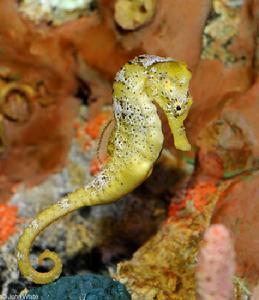
Hippocampus reidi
Hippocampus reidi,Long-snout Seahorse、Slender Seahorse、Slender seahorse,Blunt seahorse, long snout seahorse
Features:The snout seahorse is one of the most widely kept seahorse species in public aquariums and one of the most popular seahorses in the international aquarium trade.
Long-snout Seahorse (scientific name: Hippocampus reidi), also known as Long-snout Seahorse, Slender Seahorse, Slender seahorse, is a fish of the Syngnathidae family and the genus Hippocampus.Long-snout Seahorse (scientific name: Hippocampus reidi), also known as Long-snout Seahorse, Slender Seahors...
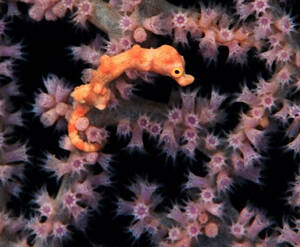
Denise's Pygmy Seahorse
Denise's Pygmy Seahorse,Hippocampus denise
Features:The body is pure orange or orange, with a short beak and a tail of prehensile length.
Denise's Pygmy Seahorse, also known as Denise's Pygmy Seahorse in English, is a fish of the Syngnathidae family and the genus Hippocampus.The Dennis pygmy seahorse was discovered in Indonesia by Sara Lourie, a graduate student at McGill University in Montreal, Canada, and co-authored with Dr...
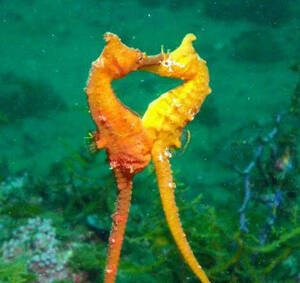
High-crowned Seahorse
High-crowned Seahorse
Features:The crowned seahorse has a unique body shape, swimming posture and reproduction, and is an ornamental fish.
High-crowned Seahorse is an animal of the Syngnathidae family and the genus Hippocampus.The scientific name of the crowned seahorse, "Hippocampus coronatus", was often used as a synonym for the flower seahorse (Hippocampus sindonis) in the past. However, morphometric and genetic studies ha...
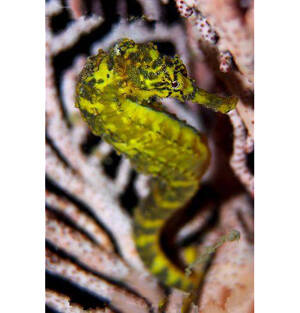
Hippocampus comes
Hippocampus comes,Tiger tail seahorse
Features:Only one partner in life
Tiger tail seahorse, Latin name Hippocampus comes, foreign name Tiger tail seahorse, is one of the species of Syngnathidae in the order Acanthopterygii of the class Actinopterygii.Tiger tail seahorses usually appear in pairs, are carnivorous, feed on small crustaceans, are nocturnal, and can be used...
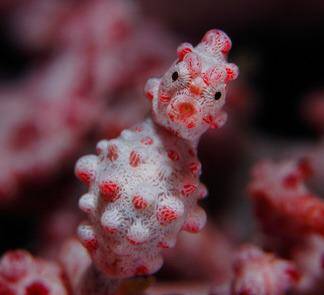
Hippocampus bargibanti
Hippocampus bargibanti,Bargibant's Seahorse、Gorgonian Seahorse、Pygmy Seahorse,Pygmy seahorse, Bartholin's seahorse
Features:Has excellent camouflage ability
Bargibant's Seahorse (scientific name: Hippocampus bargibanti), also known as Bargibant's Seahorse, Gorgonian Seahorse, Pygmy Seahorse in foreign languages, is an animal of the Syngnathidae family and the genus Hippocampus.Georges Bargibant, who works at an aquarium in New Riolidonia, Oceani...
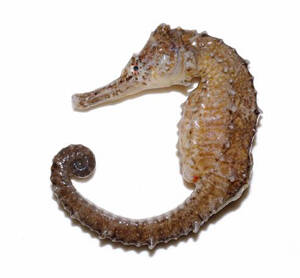
Hippocampus trimaculatus
Hippocampus trimaculatus,Three-spot Seahorse、Flat-faced Seahorse、Longnose Seahorse,Three-spotted seahorse
Features:Laterally flattened, with a protruding abdomen, a seven-sided trunk, and a four-sided tail.
The spotted seahorse (scientific name: Hippocampus trimaculatus), also known as Three-spot Seahorse, Flat-faced Seahorse, Longnose Seahorse, is an animal of the Syngnathidae family and the genus Hippocampus.The spotted seahorse has strong reproductive capacity and grows rapidly. It lives in shallow...

Hippocampus abdominalis
Hippocampus abdominalis
Features:With a round belly, it is the largest of all known seahorses.
The Latin name of the big-bellied seahorse is c (Lesson, 1827), also known as the puffy-bellied seahorse, which is one of the species of the genus Hippocampus in the order Acanthopterygii of the class Actinopterygii and the family Syngnathidae. It is the largest of all known seahorses.The big-bellie...

Oncorhynchus masou
Oncorhynchus masou,Montso salmon,Chimon salmon, etc.
Features:It is a precious economic fish with delicate and delicious meat, and is deeply loved by the people.
Masu salmon, whose Latin name is Oncorhynchus masou, is the southernmost migratory species of the genus Oncorhynchus in my country, with a southern limit of 35 degrees north latitude. It has a high adaptability to temperature and is one of the inland domestication targets.The Masu salmon is a migrat...
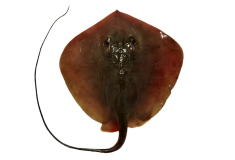
Dasyatis bennettii
Dasyatis bennettii,Bennett's Stingray,Bennett's stingray
Features:It is a bottom-dwelling fish, closely related to sharks.
The yellow stingray's Latin name is Dasyatis bennettii, and its foreign name is Bennett's Stingray. It is a fish of the family Stingray and the genus Stingray.The yellow stingray (Dasyatis bennettii) was first described in 1841 by German ichthyologist and physiologist Johannes Peter Müller...
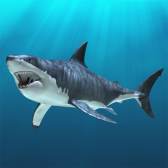
Carcharodon carcharias
Carcharodon carcharias,Great White Shark,Great white shark, white shark, man-eating shark, white shark, man-eating shark
Features:One of the most vicious sharks
The scientific name of the Great White Shark is Carcharodon carcharias, and its foreign name is Great White Shark. There are no subspecies.The relationship between the Great White Shark and other genera in its family is controversial. Two systematic arrangements have been proposed. One holds that it...
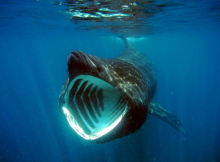
Cetorhinus maximus
Cetorhinus maximus,Basking Shark,Elephant shark, basking shark, Gan shark, Meng shark, mouse shark, elephant shark, basking shark
Features:The basking shark is the second largest filter-feeding shark in the world after the whale shark.
The Latin name of the basking shark is Cetorhinus maximus, and its foreign name is Basking Shark. There are no subspecies.The basking shark was first described by Gunnerus in 1765 from a specimen in Norway and was originally named Squalus maximus; in the same year, it was changed to the recognized s...
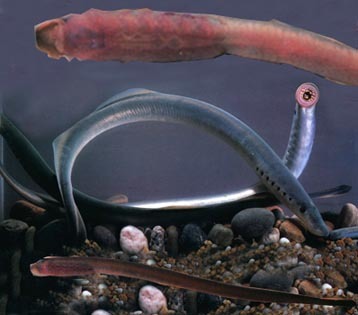
Lampetra japonicaMartens
Lampetra japonicaMartens,Lamprey, Japanese lamprey
Features:There is a row of 7 separate gill openings behind the eyes. The gill openings and eyes are arranged in a straight line, with a total of 8 eye-like points, so it is commonly called octagonal gills.
The Latin name of Japanese lamprey is Lampetra japonicaMartens, and the species' type origin is in Japan.Japanese lamprey is a carnivorous fish. It lives both independently and parasitically. It often attaches itself to other fish with a sucker and uses the keratin teeth inside the sucker and on...
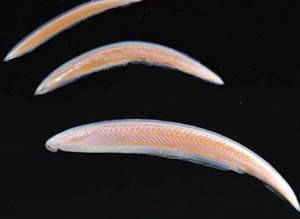
Pacific Lancelet
Pacific Lancelet,Bai's lancelet, lancelet, slug, sea worm, pine worm, headless fish, crocodile worm, Xiamen lancelet, etc.
Features:The brain is underdeveloped and the whole body is translucent
The Pacific Lancelet is a warm-temperate marine fish with no subspecies.The origin of Xiamen Lancelet, Liuwudian, Tong'an County, Xiamen City, is known as the hometown of Lancelet. Xiamen Lancelet is also named after the Wenchang Pavilion on the Liuwudian Island.Xiamen lancelets are warm-tempera...
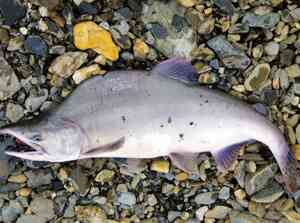
Oncorhynchus
Oncorhynchus,Big fish, Dafaha fish, Guoduo fish, Oyster fish, Chimon fish, Salmon, King salmon
Features:It looks like a bird, with small eyes and a big mouth, and has high nutritional value.
Salmon are distributed on both the east and west sides of the Pacific Ocean. In my country, the largest number of salmon are found in the Heilongjiang River, the Wusuli River, and the Songhua River. They are also found in the Tumen River, the Hunchun River, the Mi River, the Suifen River, the Nen Ri...
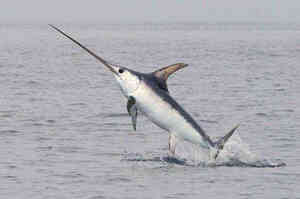
Xiphias gladius
Xiphias gladius,swordfish,Swordfish, marlin, blue swordfish, tench
Features:The body is smooth, the back and body are brownish black, the upper jaw is long and pointed, the dorsal fin is small, the mouth is flat, and there are no gills or pelvic fins.
Swordfish (scientific name: Xiphias gladius), also known as "arrowfish". It is a common fish in tropical and subtropical oceans in the world. It is named because its upper jaw extends forward in a sword shape. A "speed comparison table of marine animals" published in the Soviet m...
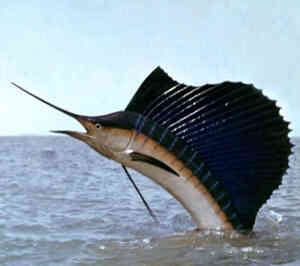
Xiphias gladius
Xiphias gladius,swordfish,Sailfish, swordfish, marlin, plantain fish, umbrella sailfish, flatfin sailfish
Features:The upper jaw of its mouth is like a sharp sword, and the first dorsal fin is long and tall, like a raised sail or a flag, so people call it sailfish.
There are two common types of sailfish: the oriental sailfish and the gray sailfish. Also known as flat sail, swordfish, and swordfish. Sailfish are river fish, and are pelagic fish active in tropical and subtropical oceans. They are ferocious by nature and swim fast. When attacking a target, they c...
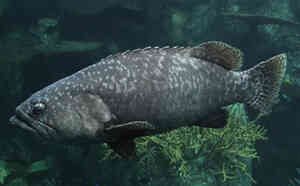
Epinephelusspp.
Epinephelusspp.,Dragon grouper, dragon grouper,
Features:It has a thick body and a large mouth, which makes it unsuitable for long-distance and fast swimming.
Grouper is the general name for fish of the subfamily Epinephelinae, belonging to the class Osteichthyes, the subclass Neopterygii, the order Acanthopterygii, the order Perciformes, the suborder Percoidei, and the family Serranidae. It is a large and medium-sized warm-water marine fish, widely distr...
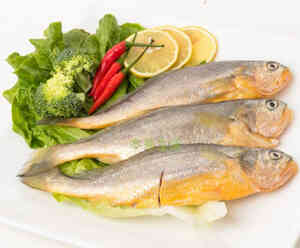
Larimichthys
Larimichthys,yellow croaker,Yellow croaker, yellow croaker, kingfish
Features:The body is nearly rectangular and laterally flattened, with golden yellow sides and ventral side.
Yellow croaker, Larimichthys (D. S. Jordan et Starks, 1905), also known as yellow croaker, is a general term for a genus of yellow croaker in the family Sciaenidae. It is found in the East China Sea. There are two hard stones in the fish head, called otoliths, so it is also called stonehead fish. Th...
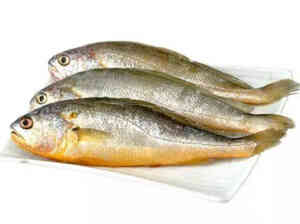
Larimichthys polyactis
Larimichthys polyactis,Small yellow croaker, plum, plum fish, small king fish, small fresh, small spring fish, small cucumber fish, thick scale fish, flower fish, big eye, ancient fish, yellow scale f
Features:It is similar to large yellow croaker, but the difference between large yellow croaker and this species is that the caudal peduncle is more than 3 times longer than its height.
Small yellow croaker is a warm-temperate bottom-dwelling schooling migratory fish. It usually inhabits soft mud or muddy sea areas, and its vertical movement phenomenon will enter the estuary area. It hates strong light and likes turbid water. It rises at dusk and descends at dawn. It often inhabits...
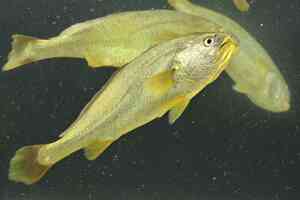
Larimichthys crocea
Larimichthys crocea,Yellow croaker, yellow croaker, cucumber fish, golden dragon, big fresh, golden dragon, red melon, sweet-scented osmanthus yellow croaker, king fish, large yellow croaker
Features:It is similar to small yellow croaker, the main difference is that the caudal peduncle is thicker and more than twice as long as its height.
Pseudosciaena crocea is a warm and humid nearshore migratory fish. It often lives in the middle and lower layers of water within 60 meters. It likes turbid waters. It often floats at dawn, dusk or high tide, and sinks during daytime and low tide. It has the habit of swarming. In the reproductive sea...
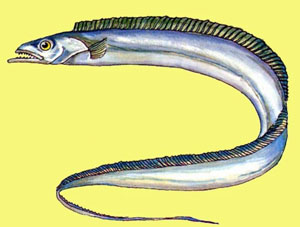
Trichiurus lepturus
Trichiurus lepturus,Largehead hairtail, skirt fish, fat fish, oil fish, tooth fish, mullet
Features:It is one of the four major seafoods in China, along with large yellow croaker, small yellow croaker and cuttlefish.
The hairtail fish along the coast of my country can be divided into two categories: southern and northern. The northern hairtail fish are larger than the southern hairtail fish. They hibernate in the southern Yellow Sea, swim to the Bohai Sea in spring, forming a spring fish season, and return to th...

